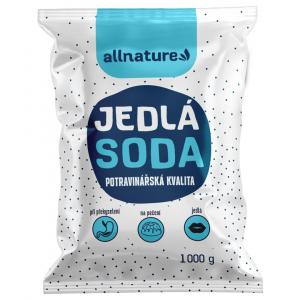
How to Wash a Cap Effectively Using Modern Methods

How to Wash a Cap Properly Without Losing Its Shape – Washing Machine, Hands, or Dishwasher?
Caps are worn by people across generations – from children playing on the playground, to athletes, to those who simply love comfort and style. But because we wear them often and in various weather conditions, they quickly get dirty. Sweat, dust, grease, and stains from ice cream or coffee – all of these gradually soak into the fabric, and if we don't take proper care of our caps, they can quickly lose not only their color but also their shape. And let's admit, a warped visor isn't exactly a fashionable accessory.
The question is: how to wash a cap properly so it lasts as long as possible like new? There are several options – hand washing, machine washing, and surprisingly also washing in the dishwasher. Each method has its pros and cons, and it depends on the material, construction, and age of your cap. Let's go through each option and find out which one is right for you.
Hand Washing – A Classic That Won't Disappoint
The most gentle way to wash a cap is undoubtedly by hand. This method is ideal mainly for older or rare pieces with a stiff cardboard visor. Many older models have glued cardboard inside the visor, which can soak and deform with a large amount of water.
How to do it? You only need soap or a mild detergent (ideally eco-friendly without irritating chemicals), lukewarm water, and a soft brush or cloth. Immerse the cap in slightly warm water, apply some detergent to the dirty areas, and gently clean them. Use the brush carefully, especially in areas around seams or embroidery, where dirt accumulates most often.
After cleaning, rinse the fabric thoroughly with clean water and let the cap dry naturally – ideally on a round surface like a bowl or inflatable ball to retain its shape. Never dry it on a radiator or in direct sunlight, as it may fade or deform.
Tip for everyday maintenance? If you sweat often, use natural deodorants or cap liners that absorb sweat and prolong the cleanliness of the material.
How to Wash a Cap in the Washing Machine?
At first glance, it may seem like a convenient solution – throw the cap in the washing machine, add laundry, turn on the program, and it's done. But this is where the problem lies. Washing a cap in the washing machine is suitable only for modern caps that have a plastic visor and are labeled as “machine washable.”
If you decide on this method, stick to a few principles. Always use a gentle program, ideally hand wash without spinning, and place the cap in a laundry bag or old pillowcase to protect its shape. Wash it with similar colors and never add items like towels or jeans that can mechanically damage the cap.
The temperature should not exceed 30°C, and again, choose a gentle detergent without enzymes and fragrance. After washing, shape the cap and let it air dry, preferably again on a round object. This will prevent the visor from losing its curve.
For example, one runner shares his experience of wearing the same sports cap almost every day. Although it has a plastic visor and is made of functional fabric labeled by the manufacturer as suitable for the washing machine, he uses machine washing at most once a month and alternates it with hand rinsing after training. Thanks to this, it has lasted him three seasons without frayed seams and fading.
When It Comes to the Dishwasher – Does It Really Work?
You might be surprised, but you can wash a cap in the dishwasher. This trick is most commonly used in the USA, where caps are a big part of sports culture, and people look for ways to keep them in perfect condition without complicated care. But does it really work?
In short – yes, but only under certain conditions. The dishwasher doesn't use as intense spinning as the washing machine, and the water flows evenly, which is relatively gentle for the cap. However, what you add to the dishwasher – and what not is crucial.
Place the cap in the upper rack, ideally in a special plastic cap holder (available online) that maintains its shape during the cycle. Use an eco-friendly tablet without bleach and fragrance and choose a program with the lowest possible temperature – ideally up to 45°C. Definitely avoid hot air drying! After the program ends, immediately remove the cap, shape it, and let it dry.
This method is suitable mainly for sports caps made of polyester or functional materials. On the other hand, avoid the dishwasher if the cap has embroidered logos, metal accessories, or is very old or delicate.
When to Avoid Washing the Cap Altogether?
In some cases, it's better to avoid washing altogether. If you have a collector's item, a cap with a signature, or one made of sensitive material (such as suede or wool), have it professionally cleaned or gently wipe it with a damp cloth. Moisture and detergents can irreversibly damage not only the color but also the fabric's structure.
That's why it's worth having more caps to rotate – one for sports, another for the city, and a third just for home. This reduces wear on each piece and makes maintenance easier.
Eco-Friendly Tips for Cap Care
Since we wash caps mainly because of sweat and dirt from daily wear, it's not necessary to wash them often. It's enough to regularly air them, occasionally wipe with a damp cloth, and use natural products that neutralize odors – such as baking soda or vinegar spray.
Try our natural products
If washing is necessary, choose eco-friendly detergents that don't burden aquatic ecosystems and are gentle on the skin. Many biodegradable gels or soaps are also antibacterial, eliminating odors without the need for chemicals.
As a well-known fashion stylist says: “It's not about how many things you have, but how you take care of them.” Careful handling of clothing and accessories not only extends their lifespan but also reduces each of our ecological footprints.
A cap is more than just a fashion accessory – it’s a personal item that often accompanies us through the summer, trips, and sports performances. And with the right care, it can serve us for many years without losing its beauty or functionality.




